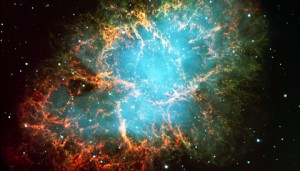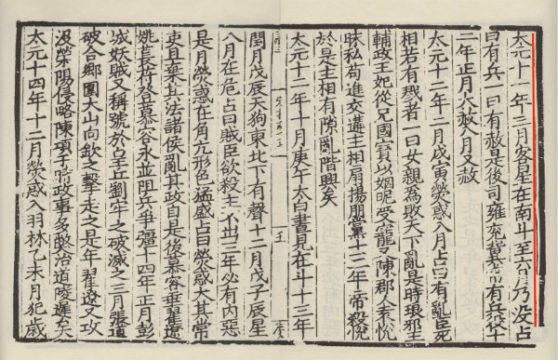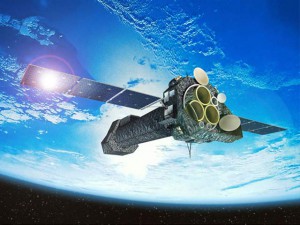A faint supernova remnant designated G7.7–3.7 may be the remains of SN 386, a supernova recorded by Chinese stargazers over 1,600 years ago.

ESO
Astronomers may have found a connection between an object first observed in the late 1900s and a mysterious “guest star” that appeared in the sky over a millennium and a half ago. New research indicates that a supernova remnant named G7.7–3.7 is likely the remains of an explosion catalogued by Chinese astronomers in AD 386, known today as SN 386.
Supernovae are the universe’s fireworks — explosive, bright, and beautiful — and if they are anywhere in our vicinity, impossible to miss. These brilliant ends to a star’s life leave behind expanding clouds of dust and gas known as supernova remnants, whose properties are tied inextricably to both the explosion and the original star. Matching a remnant to observations of its supernova helps astronomers understand and classify the remnant, which can offer insight into stellar evolution and the formation of the neutron stars or black holes at their hearts.
Over the last two thousand years, observers have recorded and marveled at the sudden appearance and disappearance of bright sources in the sky, many of which are believed to be supernovae. The Crab Nebula, for example, is the leftover imprint of a supernova observed around the world in AD 1054. Though mentions of later events can be found in multiple sources across the globe, only one set of written records has survived from the first millennium AD — a catalog by ancient Chinese astronomers of 20 guest stars spanning the course of almost 2 millennia.
SN 386 and G7.7-3.7
The first mention of SN 386 occurs in the historical text Song Shu: “During the third month of the eleventh year of the Tai-Yuan reign-period of the Jin dynasty, there was a guest star at Nan-Dou until the sixth month, when it was extinguished.” Nan-Dou is an asterism within the Sagittarius constellation, and home to the G7.7–3.7 remnant.

G. Li (National Astronomical Observatory of China) / National Library of China
G7.7–3.7, however, is not the only remnant whose position matches the ancient observations. In 2016, another remnant in Nan-Dou, G11.2–0.3, was ruled out as a match when studies showed that it would not have been visible to the naked eye. After G11.2–0.3 was rejected, astronomers in the Netherlands and China started actively searching for other possible matches.

D. Ducros / ESA
By studying spectroscopic X-ray observations of G7.7–3.7 in data from the XMM-Newton space telescope from 2005 and 2012, the researchers estimated the remnant’s age to be consistent with the observation in AD 386. The observations also found this remnant to exhibit low extinction — most of its light reaches Earth without being absorbed by gas clouds — meaning the corresponding supernova would have been visible to the naked eye. This is the only known remnant in the vicinity of Nan-Dou found to satisfy these conditions, making it a likely match.
The team published their findings in the September 20th Astrophysical Journal Letters.
SN 386 was only visible for a few months, far shorter than other historical supernovae. Combining information about its low visibility with conclusions about the remnant’s location and extinction led the researchers to believe it was likely a Type II-P supernova, a rare type of low-energy explosion.
Just the Start
This is just a preliminary match. The method used to measure the remnant’s age only gives a ballpark estimate, give or take several hundred years. A separate method used to date the remnant involves comparing observations of it over time to measure its expansion rate, but this could require decades of measurements.
In the short term, “deeper X-ray observations toward G7.7–3.7 will certainly help us to get a better accuracy of the [remnant] age,” says lead author Ping Zhou (University of Amsterdam). She and her colleagues are already planning follow-up observations, not just for better dating, but also to learn more about the explosion and its progenitor.
Kazimierz Borkowski (North Carolina State University), who led the work rejecting G11.2–0.3 as a match, agrees that further observations are needed for confirmation. He also muses that deeper exposures might reveal the presence of particles ejected by the original star, which could reveal details about the dynamics of the initial — possibly rare — explosion.
Zhou and her team also look forward to finding and studying remnants of other historical supernovae, looking for further connections between modern and ancient datasets. As a Chinese astronomer, Zhou is glad to be able to combine her work with the ancient records in what she calls a “millennial collaboration.”
References:
P. Zhou et al. "G7.7–3.7: a young supernova remnant probably associated with the guest star in 386 CE (SN 386)." Astrophysical Journal Letters. September 20, 2018.
K.J. Borkowski, S.P. Reynolds, and M.S.E. Roberts. "G11.2–0.3: The Young Remnant of a Stripped-Envelope Supernova." Astrophysical Journal. March 10, 2016.
 3
3









Comments
bwana
October 12, 2018 at 6:39 pm
Neat stuff!
You must be logged in to post a comment.
Martian-Bachelor
October 25, 2018 at 8:00 pm
“During the third month of the eleventh year of the Tai-Yuan reign-period of the Jin dynasty..."
Is there a way to translate this into an approximate Julian Day Number, or a month and year (and maybe a day) on our current calendar?
You must be logged in to post a comment.
Rutuparna Das
November 7, 2018 at 12:25 pm
The ApJ paper mentions that these months correspond to "Apr 15/May 14–Jul 13/Aug 10, 386."
You must be logged in to post a comment.
You must be logged in to post a comment.